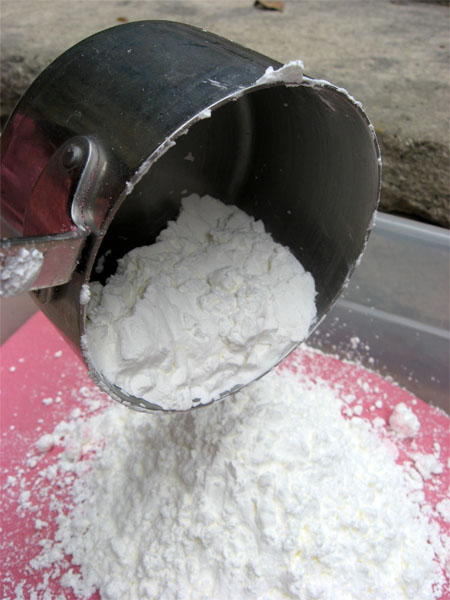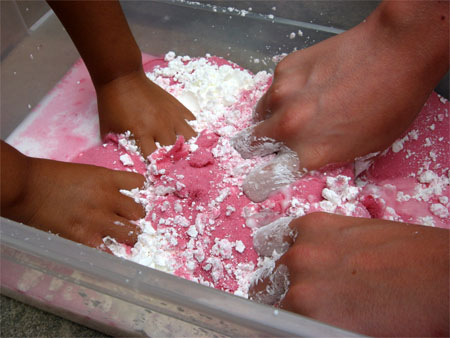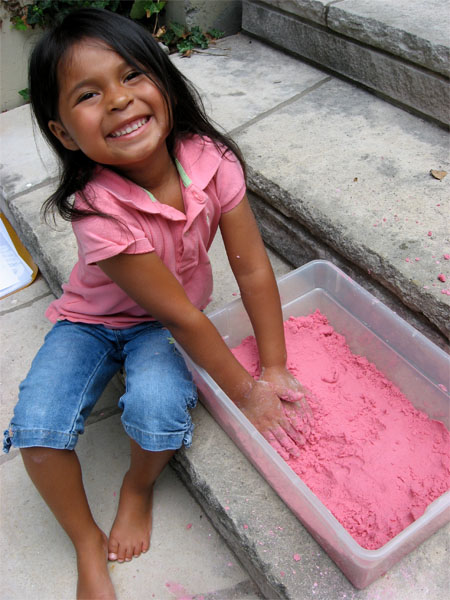FHE: Spiritual Power
 by Shauna Gibby
And it came to pass that I, Nephi, said unto my father: I will go and do the things which the Lord hath commanded, for I know that the Lord giveth no commandments unto the children of men, save he shall prepare a way for them that they may accomplish the thing which he commandeth them. (1 Nephi 3:7)
Conference Talk:
by Shauna Gibby
And it came to pass that I, Nephi, said unto my father: I will go and do the things which the Lord hath commanded, for I know that the Lord giveth no commandments unto the children of men, save he shall prepare a way for them that they may accomplish the thing which he commandeth them. (1 Nephi 3:7)
Conference Talk:
For more information on this topic read "To Acquire Spiritual Guidance," by Richard G. Scott,
Ensign, Nov 2009, 6-9.
Thought:
Assistance will come to you through the Holy Ghost as spiritual guidance. It is a power, beyond your own capability, that a loving Heavenly Father wants you to use consistently for your peace and happiness.
(Richard G. Scott, "To Acquire Spiritual Guidance,"
Ensign, Nov 2009, 6-9.)
Song:
"Teach Me to Walk,"
Children's Songbook, p. 177.
Scripture:
And it came to pass that I, Nephi, said unto my father: I will go and do the things which the Lord hath commanded, for I know that the Lord giveth no commandments unto the children of men, save he shall prepare a way for them that they may accomplish the thing which he commandeth them. (1 Nephi 3:7)
Lesson:
Show your family the picture of Abinadi before King Noah found in a paperback copy of the Book of Mormon (or, if available, use Gospel Art Picture Kit, no. 308). Allow each family member to look carefully at the picture and then read together Mosiah 13:1-9. Ask the following questions:
- Why was Abinadi sure he would not be "destroyed at this time"? (See verse 3.)
- How was Abinadi protected from King Noah's men? (See verse 5.)
- Why were King Noah and his priests angry with Abinadi? (See verses 6-8.)
- How might this story give you courage when you face difficult tasks?
Have someone read the following statement: "When we know who we are and
what God expects of us--when his 'law [is] written in [our] hearts'--we are spiritually protected." (Russell M. Nelson, "Children of the Covenant," Ensign, May 1995, p. 34.)
Ask, "How does the story of Abinadi help you to have courage in the callings you receive from the Lord?"
(Dennis H. Leavitt and Richard O. Christensen,
Scripture Study for Latter-day Saint Families: The Book of Mormon, [Salt Lake City: Deseret Book, 2003], p. 129.)
Story:
In our most honest moments, many of us question how strong our testimony really is. How does it feel to have the Spirit? Are some of our feelings just wishes, hopes, and desires as opposed to confirmation of the Spirit? How can we be sure? Why can't we testify with the same certainty as others testify?
These questions are particularly troublesome to teenagers and young adults who have grown up in the Church. Converts have a "before" and "after" with which they can compare, but members who have been raised in the Church have not experienced what it is like to be without the Spirit. Many young men and women who are old enough to be called on missions bear their testimonies along this line: "I believe the Church is true, but I'm not really sure. I hope while on my mission I will receive the same testimony many of you have."
Young people often go through their early life leaning on the testimony of parents, grandparents, older brothers and sisters, and the converts who moved in next door. They don't think that anything spectacular has happened to them personally, and so they wait for a feeling of the Spirit that is more powerful than and different from anything they have ever felt before. Then they receive a mission call and realize that they are going to be testifying to people and must be able to stand on their own spiritual feet. They ask themselves, "Do I have a testimony or not?"
Those who pay the price of studying, praying, and living the gospel soon discover a simple truth. They go into the exercise looking for some spectacular spiritual feelings, different from those ever experienced, only to find out they have felt that same familiar spirit all of their life.
The witness a convert receives is the same witness a person born in the Church receives. One reason it is so spectacular to a convert is that it is new. Those who were born in the Church have had these feelings since birth. They have felt them in sacrament meetings, at youth testimony meetings, during family home evenings, while being administered to during an illness, while reading the Book of Mormon, while listening to inspiring stories from their parents, at the airport while seeing brothers or sisters off on missions, while visiting grounds of a temple, when hearing the Joseph Smith story, and so forth. Spiritual witnesses come at a young age to those who are exposed to experiences of a spiritual nature.
(Glenn L. Pace,
Spiritual Plateaus, [Salt Lake City: Deseret Book, 1991].)
Activity:
Set up chairs to make a maze or simply place them in a very disorganized fashion.
Choose one person to be "it," and put the blindfold on him. Choose another person to represent spiritual guidance. Tell the person who is it that you are going to send him to mortality and that there will be things that he can run into. Remind him that he can always have spiritual guidance available to him through the Light of Christ, the Holy Ghost, and other means. He must listen carefully to the right voice, because the voices of the world will also be in mortality.
Take time to tell everyone of the rules to this game: not one may touch the person who is "it" at any time, the voices of the world may move around the room but may not physically interfere with the person's spiritual guidance, the person who is "it" may use his hands to keep from falling, and no one may move an obstacle.
Send the voices of the world into the room, and have the person and his spiritual guidance then enter the room. Proceed with the game.
(Beth Lefgren and Jennifer Jackson,
Power Tools for Teaching, [Salt Lake City: Bookcraft, 1988], p. 81.)
Refreshment
Bird's Nest Cookies
- 1 (12-ounce) bag butterscotch chips or chocolate chips
- 1 (12-ounce) can Chinese noodles
- 1 cup miniature marshmallows
Melt the butterscotch or chocolate chips in the microwave in a medium bowl. To do so, microwave on high power for 1 minute and stir. Return to microwave in 30-second increments, stirring each time, until melted and smooth. If you don't have a microwave, bring a saucepan of water to a simmer over the stovetop. Place the butterscotch or chocolate chips in a bowl that is large enough to make contact around the edge of the pan and put the bowl on top of the saucepan. Stir until melted. The simmering water will heat the bowl and melt the chips; just make sure the water never reaches a full boil or splashes into the bowl.
When all the chips are melted and the mixture is smooth, add the remaining ingredients and stir well. Use a tablespoon to drop the batter onto a cookie sheet that has been lined with waxed paper. Refrigerate until the cookies are firm.
Makes 2 dozen cookies.
(Clark L. and Kathryn H. Kidd,
52 Weeks of Recipes for Students, Missionaries, and Nervous Cooks, [Salt Lake City: Deseret Book, 2007] p. 71.)


 If you are like me you try to have some cooking basics on hand. It's hard to make frugal meals or meal plan if you have nothing in the pantry. Additionally, I keep extra basics on hand for emergency purposes.
If you are like me you try to have some cooking basics on hand. It's hard to make frugal meals or meal plan if you have nothing in the pantry. Additionally, I keep extra basics on hand for emergency purposes. Mix 9 Cups of play sand (this is really fine sand I found at Wal-Mart).
Mix 9 Cups of play sand (this is really fine sand I found at Wal-Mart). Next add 3 cups of cornstarch.
Next add 3 cups of cornstarch. Then add 2 1/2 Cups water. Start with 2 1/4 cups and continue adding the water until you have the desired consistency.
Then add 2 1/2 Cups water. Start with 2 1/4 cups and continue adding the water until you have the desired consistency. Mix well
Mix well You can experiment with the ingredients until you get it exactly how you like it. Be careful though, it is very easy to get sandy oobleck! When finished playing, cover and store. Next time you play add a few tablespoons of water if it needs to be moistened.
You can experiment with the ingredients until you get it exactly how you like it. Be careful though, it is very easy to get sandy oobleck! When finished playing, cover and store. Next time you play add a few tablespoons of water if it needs to be moistened.



 The way to a man's heart is through his stomach, and with a houseful of men to love, I had to make a little effort at lovin' from the oven. For Valentines dinner I make 3D heart shaped jello (I have a mold), and canned biscuits were shaped into hearts using a cookie cutter. I didn't cut the biscuits, they were similar in size to the cookie cutter. I just pressed the entire biscuit dough into the shape of the cutter.
The way to a man's heart is through his stomach, and with a houseful of men to love, I had to make a little effort at lovin' from the oven. For Valentines dinner I make 3D heart shaped jello (I have a mold), and canned biscuits were shaped into hearts using a cookie cutter. I didn't cut the biscuits, they were similar in size to the cookie cutter. I just pressed the entire biscuit dough into the shape of the cutter. The perfect Valentine for my meat and potatoes man!
The perfect Valentine for my meat and potatoes man!